|
WORK OF THE CONSERVATION BRANCH
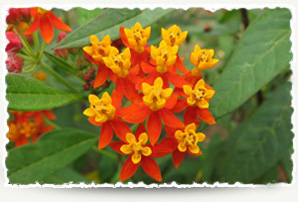
- To conserve local flora, fauna and natural habitats by offering professional advice on development proposals, planning strategies and environmental impact assessments;
- To draw up and implement biodiversity conservation plans, as well as to identify Sites of Special Scientific Interest (SSSI);
- To conduct regular ecological surveys, update inventories and manage an ecological database for Hong Kong;
- To control the release into the environment of genetically modified organisms, as well as their import and export;
- To monitor the ecology of the Mai Po Inner Deep Bay Ramsar Site and to develop and manage the Hong Kong Wetland Park;
- To protect endangered animal and plant species; and
- To promote public awareness of and participation in nature conservation through publicity and educational activities.
NATURAL ENVIRONMENT
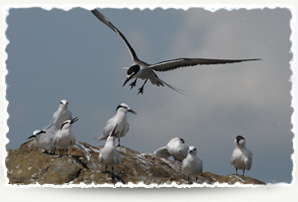 Hong Kong's topography and subtropical climate provide a wide range of habitats that support a rich variety of flora and fauna. Scenically, it has a great deal to offer – a landscape rising from sandy beaches and rocky foreshores to a height of almost 1,000 metres, with woodlands and hilly areas covered by open grassland, as well as a variety of scenic vistas rarely seen in such a small place.
Hong Kong's topography and subtropical climate provide a wide range of habitats that support a rich variety of flora and fauna. Scenically, it has a great deal to offer – a landscape rising from sandy beaches and rocky foreshores to a height of almost 1,000 metres, with woodlands and hilly areas covered by open grassland, as well as a variety of scenic vistas rarely seen in such a small place.
In Hong Kong, there are more than 3,100 species of vascular plants, of which about 2,100 are native; 56 species of terrestrial mammals; 508 species of birds; 185 species of freshwater fish; 83 species of reptiles and 24 amphibian species. Insect diversity is also very high with some 240 species of butterflies and 116 species of dragonflies.
ENHANCED NATURE CONSERVATION
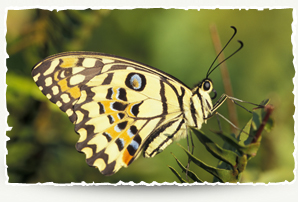 Under the New Nature Conservation Policy announced in November 2004, 12 priority sites have been identified for enhanced conservation through Public-Private Partnership (PPP) and Management Agreements (MA) with landowners. The Department is responsible for monitoring PPP and MA projects selected for implementation by the private sector or non-governmental organisations in these sites. Under the New Nature Conservation Policy announced in November 2004, 12 priority sites have been identified for enhanced conservation through Public-Private Partnership (PPP) and Management Agreements (MA) with landowners. The Department is responsible for monitoring PPP and MA projects selected for implementation by the private sector or non-governmental organisations in these sites.
As at March 2012, there were three MA projects implemented at four priority sites. The two MA projects commenced in Long Valley and Fung Yuen since 2005 covered more than 15 hectares of private land. Moreover, a pilot MA project at Ramsar Site and Deep Bay Wetland Outside Ramsar Site covering about 650 hectares of fish ponds commenced in January 2012 with a view to enhancing the ecological values of the fish ponds. The increase in the number and diversity of birds and butterflies in Long Valley and Fung Yuen suggested that the MA scheme was effective in enhancing the conservation value of the sites. In addition to the direct benefit to biodiversity, the projects also raised the conservation awareness of the public, local villagers and fish farmers.
In June 2011, the Environment and Conservation Fund supported the extension of MA scheme to cover country park enclaves as well as private land within country parks in order to further enhance the conservation of country parks.
ECOLOGICAL SURVEYS AND DATABASE
The Department has been conducting a territory-wide ecological survey programme since 2002 with a view 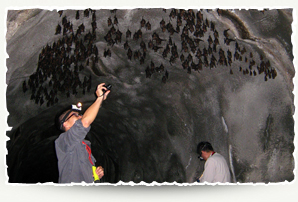 to maintaining and updating an ecological database for the whole of Hong Kong. The survey programme covers all major habitats of high conservation value in Hong Kong, including the location, status and composition of feng shui woods, as well as the distribution and abundance of selected animal groups. As at March 2012, more than 90,500 records of over 4,000 species of plants and animals had been collected, verified, and stored in the database. to maintaining and updating an ecological database for the whole of Hong Kong. The survey programme covers all major habitats of high conservation value in Hong Kong, including the location, status and composition of feng shui woods, as well as the distribution and abundance of selected animal groups. As at March 2012, more than 90,500 records of over 4,000 species of plants and animals had been collected, verified, and stored in the database.
The survey findings confirmed that Hong Kong has a rich biodiversity, including species new to Hong Kong and even new to science. The findings further indicated that our protected areas encompass a very significant portion of this biodiversity. For the species groups surveyed and analysed, over 98% of the terrestrial and freshwater species that are regularly seen in Hong Kong have representative population(s) inside our protected areas.
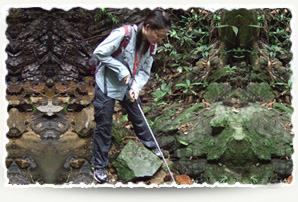 During the year, the Department continued to boost public interest in local biodiversity and arouse public awareness of nature conservation through its online database on representative species and habitats at Hong Kong Biodiversity Online and the Hong Kong Live Eco-map. The Department also developed a central database using the Geographical Information System which incorporated survey data and ecological information available from other sources. During the year, the Department continued to boost public interest in local biodiversity and arouse public awareness of nature conservation through its online database on representative species and habitats at Hong Kong Biodiversity Online and the Hong Kong Live Eco-map. The Department also developed a central database using the Geographical Information System which incorporated survey data and ecological information available from other sources.
THE MAI PO INNER DEEP BAY RAMSAR SITE
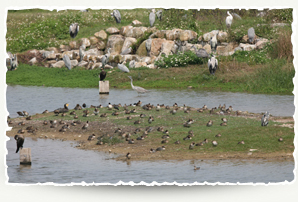 About 1,500 hectares of wetland in the Mai Po and Inner Deep Bay area was listed as a Ramsar Site in 1995. The Mai Po Inner Deep Bay Ramsar Site is located along the major migratory bird flyway “East Asian - Australasian Flyway” which is an important stopover site and habitat, supporting over 150 species of migratory and local waterbird species. About 1,500 hectares of wetland in the Mai Po and Inner Deep Bay area was listed as a Ramsar Site in 1995. The Mai Po Inner Deep Bay Ramsar Site is located along the major migratory bird flyway “East Asian - Australasian Flyway” which is an important stopover site and habitat, supporting over 150 species of migratory and local waterbird species.
Since August 2001, the Department has implemented a baseline ecological monitoring programme for the Ramsar Site. This long-term monitoring programme aims to collect ecological baseline information on the benthic communities and the extent of wetland habitats at the Ramsar Site.
Commissioned by the Department, the Hong Kong Bird Watching Society has been carrying out a monthly waterbird monitoring programme for the Deep Bay area since 1997. From October 2011 to March 2012, the peak winter count of waterbirds at the Ramsar Site was about 68,080, including some 25,700 ducks and grebes, some 25,300 shorebirds, some 4,606 gulls and terns, some 9,600 cormorants, some 2,600 egrets and herons, and some 150 rails and coots.
BLACK-FACED SPOONBILLS
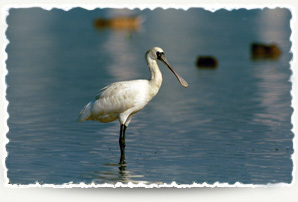 The Black-faced Spoonbill is a globally endangered species that can only be found in the East Asia region. In 2011-12 winter, the global population survey recorded 2,693 individuals. The highest count for wintering population in the Deep Bay area, which was recorded in January 2012, was 393 individuals, i.e. about 15% of them made the Inner Deep Bay area their winter or stop-over migration site. The area has the second largest number of wintering Black-faced Spoonbills in the world. The Black-faced Spoonbill is a globally endangered species that can only be found in the East Asia region. In 2011-12 winter, the global population survey recorded 2,693 individuals. The highest count for wintering population in the Deep Bay area, which was recorded in January 2012, was 393 individuals, i.e. about 15% of them made the Inner Deep Bay area their winter or stop-over migration site. The area has the second largest number of wintering Black-faced Spoonbills in the world.
A conservation plan for Black-faced Spoonbills has been in place since 2001 which aims at maintaining the Mai Po Inner Deep Bay Ramsar Site in favourable conditions for the wintering Black-faced Spoonbills in Hong Kong. The plan also makes recommendations on measures for species and habitat protection and management, monitoring and research, education and training as well as regional cooperation.
GREEN TURTLES
Green Turtle (Chelonia mydas) is the only sea turtle species that regularly breeds in Hong Kong. Various conservation measures have been put in place, including the designation of Sham Wan beach on Lamma Island as a restricted area during the nesting period from June to October each year,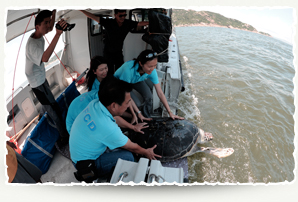 regular patrols and public education about sea turtle conservation in Hong Kong. In 2011, four Green Turtles received from the public were released in May by the Department after health assessment. Another two Green Turtles were released in July after having received treatment in the Ocean Park Hong Kong. With a view to understanding the movement of Green Turtles and locating their foraging grounds in South China Sea, satellite transmitters were deployed on the turtles. Satellite tracking revealed that these Green Turtles arrived at their foraging grounds in the Wanshan Archipelagos, Pratas (Dongsha) Islands, East Harbour of Fujian Province and the North of Philippines. regular patrols and public education about sea turtle conservation in Hong Kong. In 2011, four Green Turtles received from the public were released in May by the Department after health assessment. Another two Green Turtles were released in July after having received treatment in the Ocean Park Hong Kong. With a view to understanding the movement of Green Turtles and locating their foraging grounds in South China Sea, satellite transmitters were deployed on the turtles. Satellite tracking revealed that these Green Turtles arrived at their foraging grounds in the Wanshan Archipelagos, Pratas (Dongsha) Islands, East Harbour of Fujian Province and the North of Philippines.
CONTROL OF TRADE IN ENDANGERED SPECIES
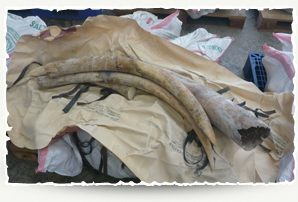 The Protection of Endangered Species of Animals and Plants Ordinance (Cap 586) is the local legislation which gives effect to the Convention on International Trade in Endangered Species of Wild Fauna and Flora (CITES). It strictly regulates the trade in endangered species. The Protection of Endangered Species of Animals and Plants Ordinance (Cap 586) is the local legislation which gives effect to the Convention on International Trade in Endangered Species of Wild Fauna and Flora (CITES). It strictly regulates the trade in endangered species.
Efforts in combating illegal trade in endangered species continued. During the year, 338 seizures were made, including a shipment of 300kg of dried seahorse from Mexico, 1,898 kg of ivory from Malaysia and 33 rhino horns from South Africa.
The achievement of Hong Kong in enforcement has received recognition in the international arena. In February 2012, the Secretary-General of CITES awarded a certificate of commendation to the Department to recognise its exemplary enforcement efforts in combating a smuggling case of rhino horns. This is the second time Hong Kong has been awarded since 2003.
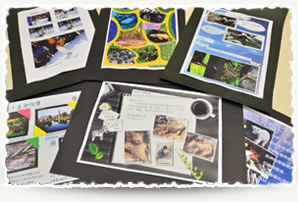 The Department continued its educational and promotional efforts to raise public awareness of the need to protect endangered species, such as organising visits to the Department's Endangered Species Resource Centre, conducting talks in schools and roving exhibitions at public venues, distributing posters and leaflets as well as arranging displays at the airport and boundary control points. Co-organised with two professional organisations, the Endangered Species Protection Photo Story Competition received good response. Under the joint education and publicity efforts between the Hong Kong Special Administrative Region and Guangdong Province, a publicity event at various control points was organised. The Department continued its educational and promotional efforts to raise public awareness of the need to protect endangered species, such as organising visits to the Department's Endangered Species Resource Centre, conducting talks in schools and roving exhibitions at public venues, distributing posters and leaflets as well as arranging displays at the airport and boundary control points. Co-organised with two professional organisations, the Endangered Species Protection Photo Story Competition received good response. Under the joint education and publicity efforts between the Hong Kong Special Administrative Region and Guangdong Province, a publicity event at various control points was organised.
Statistics on the control of trade in endangered species are at Appendix 12.
CONTROL OF GENETICALLY MODIFIED ORGANISMS
The Genetically Modified Organisms (Control of Release) Ordinance (Cap 607) commenced on March 1, 2011. Under the Ordinance, prior approval has to be sought from the Director of Agriculture, Fisheries and Conservation before a genetically modified organism (GMO) could be released or imported into Hong Kong for release into the local environment. In addition, shipments containing GMOs, when being imported or exported, have to be accompanied with prescribed documents to enable easy identification of the GMOs and to provide the contact points for further information. Detailed documentation requirements are laid down in the subsidiary legislation, the Genetically Modified Organisms (Documentation for Import and Export) Regulation.
The Ordinance provided a six-month transitional period with respect to the maintenance of released GMOs. It expired on September 1, 2011.
THE HONG KONG WETLAND PARK
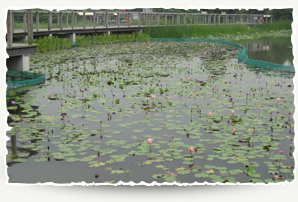 Opened in May 2006, the Hong Kong Wetland Park is a landmark in wetland conservation, with a mission to promote eco-tourism in Hong Kong and foster public awareness of the values of wetlands. The Park combines the natural beauty of 60 hectares of re-created wetland with a visitor centre of over 10,000 square metres showcasing sophisticated exhibits on wetlands. During the year, the Park attracted about 440,000 visitors. Opened in May 2006, the Hong Kong Wetland Park is a landmark in wetland conservation, with a mission to promote eco-tourism in Hong Kong and foster public awareness of the values of wetlands. The Park combines the natural beauty of 60 hectares of re-created wetland with a visitor centre of over 10,000 square metres showcasing sophisticated exhibits on wetlands. During the year, the Park attracted about 440,000 visitors.
The Department is responsible for the management of the Park, with respect to daily operation, education and community services, exhibit maintenance, habitat management and marketing promotion.
In 2011-12, the Park organised a wide range of activities for some 182,000 visitors of all ages including guided tours, seminars, wildlife watching classes, contests, dramas, art workshops and thematic events.
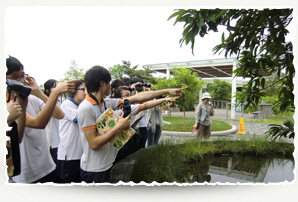 The Park offered guided visit programmes to students from kindergartens to senior secondary schools.The new "Outdoor Learning Handbook at Hong Kong Wetland Park" was published in the year to meet the demand under the new academic structure. In 2011-12, the Park conducted over 700 guided tours for more than 17,000 students. In addition, the Park organised exhibitions, talks, teacher's workshops and partnership programmes to support wetland education in schools. The Park offered guided visit programmes to students from kindergartens to senior secondary schools.The new "Outdoor Learning Handbook at Hong Kong Wetland Park" was published in the year to meet the demand under the new academic structure. In 2011-12, the Park conducted over 700 guided tours for more than 17,000 students. In addition, the Park organised exhibitions, talks, teacher's workshops and partnership programmes to support wetland education in schools.
For the general public, the Park organised 14 public lectures for more than 1,100 visitors during the year. Various thematic events were organised to tie in with public holidays and major festivals, such as Bats at Wetlands, Eco Treasure Hunt, Meet the Mud Wrestlers, Bird Watching Festival, Blossom on Wetland, and World Wetlands Day Celebrations.
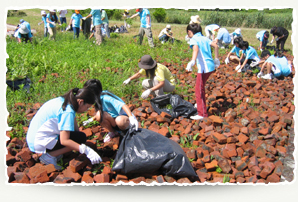 The Park continued to work with different sectors to promote the awareness of wetland conservation throughout the community. The Hong Kong Wetland Park Volunteer Scheme recruited more than 1,600 volunteers in 2011-12. They assisted in the operation of the visitor centre and habitat management, and offered guided tours for visitors. The Park also established partnership programmes with corporations and non-governmental organisations to draw expertise and resources into the force of wetland conservation. The Park continued to work with different sectors to promote the awareness of wetland conservation throughout the community. The Hong Kong Wetland Park Volunteer Scheme recruited more than 1,600 volunteers in 2011-12. They assisted in the operation of the visitor centre and habitat management, and offered guided tours for visitors. The Park also established partnership programmes with corporations and non-governmental organisations to draw expertise and resources into the force of wetland conservation.
The Park plays an important role in promoting wetland conservation and education in the Asia Pacific region. Being an active player of the Wetland Link International – Asia (WLI-Asia) network, the Park organised student exchange programmes with other wetland centres in the region.
Since 2003, the Department has been conducting habitat management at the Wetland Reserve with a view to enhancing its ecological functions. The species richness of birds recorded has since increased, and the cumulative number of bird species recorded has exceeded 238. Waterbirds or birds dependent on wetlands make up approximately 47% of all species recorded. In addition to birds, ecological surveys conducted at the Reserve have recorded a variety of other species especially the wetland indicators – dragonflies, amphibians and reptiles. The cumulative numbers of dragonfly, amphibian and reptile species recorded at the Reserve are 50, 9 and 27 respectively. This shows that, with proper site design and management, the objectives of nature conservation, education and tourism can co-exist.
HONG KONG HERBARIUM AND FLORA CONSERVATION
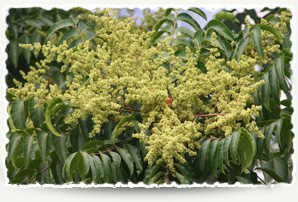 The Department manages the Hong Kong Herbarium which is responsible for the systematic collection, identification and maintenance of plant specimens of Hong Kong's flora. During the year, the specimen collection of the Herbarium exceeded 42,000, more than 290 of which are type specimens, making the Herbarium regionally important. The Department manages the Hong Kong Herbarium which is responsible for the systematic collection, identification and maintenance of plant specimens of Hong Kong's flora. During the year, the specimen collection of the Herbarium exceeded 42,000, more than 290 of which are type specimens, making the Herbarium regionally important.
The Hong Kong Herbarium collaborated with the South China Botanical Garden in compiling the Flora of Hong Kong. It is a definitive technical reference aiming at recording all known plant species in Hong Kong, and is the first flora book about plants of South China written in English and fully illustrated with botanical drawings and colour photographs. Volumes 1 to 4 of the Flora of Hong Kong were published in 2007 - 2011. They have been well received by local and overseas academics as well as plant workers.
In addition to being a resource centre for plant workers, the Herbarium aims to promote public awareness of local flora through organising guided visits and publishing educational materials.
SITES OF SPECIAL SCIENTIFIC INTEREST
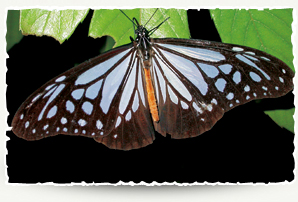 Sites of Special Scientific Interest (SSSI) may be land-based or aquatic sites, which are of special scientific interest because of their flora, fauna, geographical or geological features. During the year, the Department continued to patrol and monitor the conditions and scientific values of all SSSIs. Where warranted, the Department also carried out appropriate habitat management work at some SSSIs to maintain or enhance their scientific value. For instance, Mikania control was conducted at A Chau SSSI to improve the conditions of the trees there so as to provide a suitable site for egrets and herons to nest. Butterfly host plants were planted at Fung Yuen Valley SSSI to enhance the butterfly habitat. The Department also continued to review the status of SSSIs and identify new sites suitable for SSSI listing or make proposals for de-listing those sites no longer deserving the SSSI status due to changes in circumstances over time after their listing. Sites of Special Scientific Interest (SSSI) may be land-based or aquatic sites, which are of special scientific interest because of their flora, fauna, geographical or geological features. During the year, the Department continued to patrol and monitor the conditions and scientific values of all SSSIs. Where warranted, the Department also carried out appropriate habitat management work at some SSSIs to maintain or enhance their scientific value. For instance, Mikania control was conducted at A Chau SSSI to improve the conditions of the trees there so as to provide a suitable site for egrets and herons to nest. Butterfly host plants were planted at Fung Yuen Valley SSSI to enhance the butterfly habitat. The Department also continued to review the status of SSSIs and identify new sites suitable for SSSI listing or make proposals for de-listing those sites no longer deserving the SSSI status due to changes in circumstances over time after their listing.
CONTROL OF MIKANIA
Mikania (Mikania micrantha) is an exotic climber which grows rapidly in open and disturbed areas, such as roadsides and derelict land. The overgrowth of Mikania causes damage to other plants by cutting out light and smothering them. Since Mikania seldom grows in the shade, it does not result in any adverse impact on established woodlands with large trees and a close canopy.
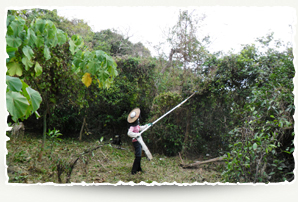 To prevent the proliferation of Mikania in sites with conservation value, the Department continued to clear the plant when it was found in country parks, special areas and SSSIs. Besides mechanical weeding, habitat management control was applied on a trial basis. The department also conducted field study to explore the feasibility of controlling Mikania with biological agents. To prevent the proliferation of Mikania in sites with conservation value, the Department continued to clear the plant when it was found in country parks, special areas and SSSIs. Besides mechanical weeding, habitat management control was applied on a trial basis. The department also conducted field study to explore the feasibility of controlling Mikania with biological agents.
In addition, the Department prepared the Nature Conservation Practice Note "Clearing Mikania" which provides technical guidance to relevant government departments and landscape contractors responsible for the clearance of Mikania. The Department has also set up a website on Mikania.
CONTROL OF WILD MONKEYS
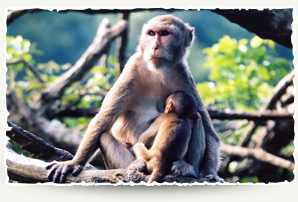 The wild monkey population in Hong Kong has been increasing for the past years and has caused public concern. To control the population increase in the long term, the Department has stepped up the field trial of contraceptive treatment. In 2011-12, the Department carried out such treatment on 461 monkeys. The Department also strengthened the enforcement of feeding ban in specific country parks to minimise monkey nuisance to visitors. During the year, a total of 71 country park visitors were prosecuted for unauthorised feeding of wild monkeys. With the implementation of both the feeding ban and the contraceptive programme, it is observed that there is a decreasing trend in the population of wild monkeys as well as the number of wild monkey nuisance cases. The wild monkey population in Hong Kong has been increasing for the past years and has caused public concern. To control the population increase in the long term, the Department has stepped up the field trial of contraceptive treatment. In 2011-12, the Department carried out such treatment on 461 monkeys. The Department also strengthened the enforcement of feeding ban in specific country parks to minimise monkey nuisance to visitors. During the year, a total of 71 country park visitors were prosecuted for unauthorised feeding of wild monkeys. With the implementation of both the feeding ban and the contraceptive programme, it is observed that there is a decreasing trend in the population of wild monkeys as well as the number of wild monkey nuisance cases.
|

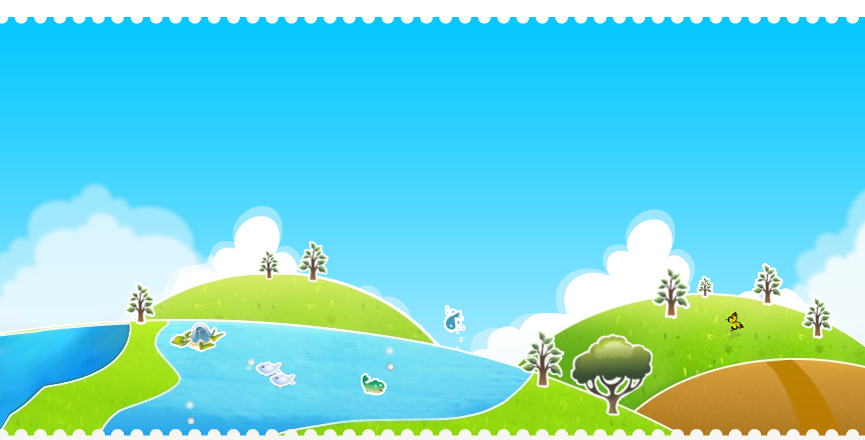









 Hong Kong's topography and subtropical climate provide a wide range of habitats that support a rich variety of flora and fauna. Scenically, it has a great deal to offer – a landscape rising from sandy beaches and rocky foreshores to a height of almost 1,000 metres, with woodlands and hilly areas covered by open grassland, as well as a variety of scenic vistas rarely seen in such a small place.
Hong Kong's topography and subtropical climate provide a wide range of habitats that support a rich variety of flora and fauna. Scenically, it has a great deal to offer – a landscape rising from sandy beaches and rocky foreshores to a height of almost 1,000 metres, with woodlands and hilly areas covered by open grassland, as well as a variety of scenic vistas rarely seen in such a small place.
 Under the New Nature Conservation Policy announced in November 2004, 12 priority sites have been identified for enhanced conservation through Public-Private Partnership (PPP) and Management Agreements (MA) with landowners. The Department is responsible for monitoring PPP and MA projects selected for implementation by the private sector or non-governmental organisations in these sites.
Under the New Nature Conservation Policy announced in November 2004, 12 priority sites have been identified for enhanced conservation through Public-Private Partnership (PPP) and Management Agreements (MA) with landowners. The Department is responsible for monitoring PPP and MA projects selected for implementation by the private sector or non-governmental organisations in these sites.  to maintaining and updating an ecological database for the whole of Hong Kong. The survey programme covers all major habitats of high conservation value in Hong Kong, including the location, status and composition of feng shui woods, as well as the distribution and abundance of selected animal groups. As at March 2012, more than 90,500 records of over 4,000 species of plants and animals had been collected, verified, and stored in the database.
to maintaining and updating an ecological database for the whole of Hong Kong. The survey programme covers all major habitats of high conservation value in Hong Kong, including the location, status and composition of feng shui woods, as well as the distribution and abundance of selected animal groups. As at March 2012, more than 90,500 records of over 4,000 species of plants and animals had been collected, verified, and stored in the database.
 During the year, the Department continued to boost public interest in local biodiversity and arouse public awareness of nature conservation through its online database on representative species and habitats at
During the year, the Department continued to boost public interest in local biodiversity and arouse public awareness of nature conservation through its online database on representative species and habitats at  About 1,500 hectares of wetland in the Mai Po and Inner Deep Bay area was listed as a Ramsar Site in 1995. The Mai Po Inner Deep Bay Ramsar Site is located along the major migratory bird flyway “East Asian - Australasian Flyway” which is an important stopover site and habitat, supporting over 150 species of migratory and local waterbird species.
About 1,500 hectares of wetland in the Mai Po and Inner Deep Bay area was listed as a Ramsar Site in 1995. The Mai Po Inner Deep Bay Ramsar Site is located along the major migratory bird flyway “East Asian - Australasian Flyway” which is an important stopover site and habitat, supporting over 150 species of migratory and local waterbird species.
 The Black-faced Spoonbill is a globally endangered species that can only be found in the East Asia region. In 2011-12 winter, the global population survey recorded 2,693 individuals. The highest count for wintering population in the Deep Bay area, which was recorded in January 2012, was 393 individuals, i.e. about 15% of them made the Inner Deep Bay area their winter or stop-over migration site. The area has the second largest number of wintering Black-faced Spoonbills in the world.
The Black-faced Spoonbill is a globally endangered species that can only be found in the East Asia region. In 2011-12 winter, the global population survey recorded 2,693 individuals. The highest count for wintering population in the Deep Bay area, which was recorded in January 2012, was 393 individuals, i.e. about 15% of them made the Inner Deep Bay area their winter or stop-over migration site. The area has the second largest number of wintering Black-faced Spoonbills in the world.  regular patrols and public education about sea turtle conservation in Hong Kong. In 2011, four Green Turtles received from the public were released in May by the Department after health assessment. Another two Green Turtles were released in July after having received treatment in the Ocean Park Hong Kong. With a view to understanding the movement of Green Turtles and locating their foraging grounds in South China Sea, satellite transmitters were deployed on the turtles. Satellite tracking revealed that these Green Turtles arrived at their foraging grounds in the Wanshan Archipelagos, Pratas (Dongsha) Islands, East Harbour of Fujian Province and the North of Philippines.
regular patrols and public education about sea turtle conservation in Hong Kong. In 2011, four Green Turtles received from the public were released in May by the Department after health assessment. Another two Green Turtles were released in July after having received treatment in the Ocean Park Hong Kong. With a view to understanding the movement of Green Turtles and locating their foraging grounds in South China Sea, satellite transmitters were deployed on the turtles. Satellite tracking revealed that these Green Turtles arrived at their foraging grounds in the Wanshan Archipelagos, Pratas (Dongsha) Islands, East Harbour of Fujian Province and the North of Philippines. The Protection of Endangered Species of Animals and Plants Ordinance (Cap 586) is the local legislation which gives effect to the Convention on International Trade in Endangered Species of Wild Fauna and Flora (CITES). It strictly regulates the trade in endangered species.
The Protection of Endangered Species of Animals and Plants Ordinance (Cap 586) is the local legislation which gives effect to the Convention on International Trade in Endangered Species of Wild Fauna and Flora (CITES). It strictly regulates the trade in endangered species. The Department continued its educational and promotional efforts to raise public awareness of the need to protect endangered species, such as organising visits to the Department's Endangered Species Resource Centre, conducting talks in schools and roving exhibitions at public venues, distributing posters and leaflets as well as arranging displays at the airport and boundary control points. Co-organised with two professional organisations, the Endangered Species Protection Photo Story Competition received good response. Under the joint education and publicity efforts between the Hong Kong Special Administrative Region and Guangdong Province, a publicity event at various control points was organised.
The Department continued its educational and promotional efforts to raise public awareness of the need to protect endangered species, such as organising visits to the Department's Endangered Species Resource Centre, conducting talks in schools and roving exhibitions at public venues, distributing posters and leaflets as well as arranging displays at the airport and boundary control points. Co-organised with two professional organisations, the Endangered Species Protection Photo Story Competition received good response. Under the joint education and publicity efforts between the Hong Kong Special Administrative Region and Guangdong Province, a publicity event at various control points was organised.
 Opened in May 2006, the Hong Kong Wetland Park is a landmark in wetland conservation, with a mission to promote eco-tourism in Hong Kong and foster public awareness of the values of wetlands. The Park combines the natural beauty of 60 hectares of re-created wetland with a visitor centre of over 10,000 square metres showcasing sophisticated exhibits on wetlands. During the year, the Park attracted about 440,000 visitors.
Opened in May 2006, the Hong Kong Wetland Park is a landmark in wetland conservation, with a mission to promote eco-tourism in Hong Kong and foster public awareness of the values of wetlands. The Park combines the natural beauty of 60 hectares of re-created wetland with a visitor centre of over 10,000 square metres showcasing sophisticated exhibits on wetlands. During the year, the Park attracted about 440,000 visitors.  The Park offered guided visit programmes to students from kindergartens to senior secondary schools.The new "Outdoor Learning Handbook at Hong Kong Wetland Park" was published in the year to meet the demand under the new academic structure. In 2011-12, the Park conducted over 700 guided tours for more than 17,000 students. In addition, the Park organised exhibitions, talks, teacher's workshops and partnership programmes to support wetland education in schools.
The Park offered guided visit programmes to students from kindergartens to senior secondary schools.The new "Outdoor Learning Handbook at Hong Kong Wetland Park" was published in the year to meet the demand under the new academic structure. In 2011-12, the Park conducted over 700 guided tours for more than 17,000 students. In addition, the Park organised exhibitions, talks, teacher's workshops and partnership programmes to support wetland education in schools.  The Park continued to work with different sectors to promote the awareness of wetland conservation throughout the community. The Hong Kong Wetland Park Volunteer Scheme recruited more than 1,600 volunteers in 2011-12. They assisted in the operation of the visitor centre and habitat management, and offered guided tours for visitors. The Park also established partnership programmes with corporations and non-governmental organisations to draw expertise and resources into the force of wetland conservation.
The Park continued to work with different sectors to promote the awareness of wetland conservation throughout the community. The Hong Kong Wetland Park Volunteer Scheme recruited more than 1,600 volunteers in 2011-12. They assisted in the operation of the visitor centre and habitat management, and offered guided tours for visitors. The Park also established partnership programmes with corporations and non-governmental organisations to draw expertise and resources into the force of wetland conservation. The Department manages the Hong Kong Herbarium which is responsible for the systematic collection, identification and maintenance of plant specimens of Hong Kong's flora. During the year, the specimen collection of the Herbarium exceeded 42,000, more than 290 of which are type specimens, making the Herbarium regionally important.
The Department manages the Hong Kong Herbarium which is responsible for the systematic collection, identification and maintenance of plant specimens of Hong Kong's flora. During the year, the specimen collection of the Herbarium exceeded 42,000, more than 290 of which are type specimens, making the Herbarium regionally important.  Sites of Special Scientific Interest (SSSI) may be land-based or aquatic sites, which are of special scientific interest because of their flora, fauna, geographical or geological features. During the year, the Department continued to patrol and monitor the conditions and scientific values of all SSSIs. Where warranted, the Department also carried out appropriate habitat management work at some SSSIs to maintain or enhance their scientific value. For instance, Mikania control was conducted at A Chau SSSI to improve the conditions of the trees there so as to provide a suitable site for egrets and herons to nest. Butterfly host plants were planted at Fung Yuen Valley SSSI to enhance the butterfly habitat. The Department also continued to review the status of SSSIs and identify new sites suitable for SSSI listing or make proposals for de-listing those sites no longer deserving the SSSI status due to changes in circumstances over time after their listing.
Sites of Special Scientific Interest (SSSI) may be land-based or aquatic sites, which are of special scientific interest because of their flora, fauna, geographical or geological features. During the year, the Department continued to patrol and monitor the conditions and scientific values of all SSSIs. Where warranted, the Department also carried out appropriate habitat management work at some SSSIs to maintain or enhance their scientific value. For instance, Mikania control was conducted at A Chau SSSI to improve the conditions of the trees there so as to provide a suitable site for egrets and herons to nest. Butterfly host plants were planted at Fung Yuen Valley SSSI to enhance the butterfly habitat. The Department also continued to review the status of SSSIs and identify new sites suitable for SSSI listing or make proposals for de-listing those sites no longer deserving the SSSI status due to changes in circumstances over time after their listing.
 To prevent the proliferation of Mikania in sites with conservation value, the Department continued to clear the plant when it was found in country parks, special areas and SSSIs. Besides mechanical weeding, habitat management control was applied on a trial basis. The department also conducted field study to explore the feasibility of controlling Mikania with biological agents.
To prevent the proliferation of Mikania in sites with conservation value, the Department continued to clear the plant when it was found in country parks, special areas and SSSIs. Besides mechanical weeding, habitat management control was applied on a trial basis. The department also conducted field study to explore the feasibility of controlling Mikania with biological agents.
 The wild monkey population in Hong Kong has been increasing for the past years and has caused public concern. To control the population increase in the long term, the Department has stepped up the field trial of contraceptive treatment. In 2011-12, the Department carried out such treatment on 461 monkeys. The Department also strengthened the enforcement of feeding ban in specific country parks to minimise monkey nuisance to visitors. During the year, a total of 71 country park visitors were prosecuted for unauthorised feeding of wild monkeys. With the implementation of both the feeding ban and the contraceptive programme, it is observed that there is a decreasing trend in the population of wild monkeys as well as the number of wild monkey nuisance cases.
The wild monkey population in Hong Kong has been increasing for the past years and has caused public concern. To control the population increase in the long term, the Department has stepped up the field trial of contraceptive treatment. In 2011-12, the Department carried out such treatment on 461 monkeys. The Department also strengthened the enforcement of feeding ban in specific country parks to minimise monkey nuisance to visitors. During the year, a total of 71 country park visitors were prosecuted for unauthorised feeding of wild monkeys. With the implementation of both the feeding ban and the contraceptive programme, it is observed that there is a decreasing trend in the population of wild monkeys as well as the number of wild monkey nuisance cases.